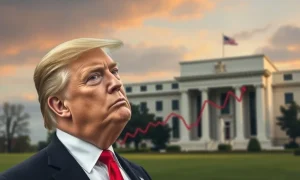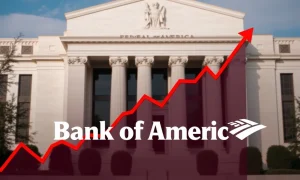The Bank of England’s Monetary Policy Committee (MPC) recently faced an unusual situation. Its latest decision on Bank of England interest rates revealed a surprising level of division. This led to not one, but two distinct votes. Such a split highlights the complex economic challenges currently facing the United Kingdom. It also signals differing views on the path forward for monetary policy. Business leaders and entrepreneurs watch these developments closely. They understand the direct impact on their operations and future planning.
Understanding the Bank of England Interest Rates Debate
The Monetary Policy Committee (MPC) sets the official Bank of England interest rates. This rate, known as the Bank Rate, influences borrowing costs across the economy. The MPC’s primary goal is to maintain price stability. They target an inflation rate of 2%. Members also support the government’s economic objectives, including growth and employment. Recent economic data has presented a mixed picture. Inflation has shown signs of easing, yet it remains above target. Economic growth has also been sluggish. This complex environment creates a difficult balancing act for policymakers. Some members prioritize bringing inflation down quickly. Others worry about the potential impact of higher rates on economic activity. Consequently, reaching a consensus becomes challenging.
The Unprecedented Split in Voting on Bank of England Interest Rates
The recent MPC meeting saw an unusual procedural outcome. Committee members typically vote on a single proposition for Bank of England interest rates. This time, two separate proposals were put to a vote. First, a proposal to hold rates at their current level was considered. A majority of members supported this option. However, a significant minority voted against it. This minority group advocated for a rate cut. They believed economic conditions warranted a reduction. This divergence of opinion underscores the internal debate. It reflects different interpretations of economic data. It also highlights varying levels of concern about future economic trends. This unusual voting pattern grabbed headlines. It provided a rare glimpse into the committee’s internal dynamics.
The Arguments for Holding and Cutting Bank of England Interest Rates
The members who voted to hold Bank of England interest rates at their current level emphasized caution. They pointed to persistent inflationary pressures. Services inflation, for instance, remains elevated. Wage growth also shows signs of strength. These factors suggest that underlying inflation could prove sticky. Furthermore, they consider the risk of cutting rates too soon. A premature cut could reignite inflationary pressures. This would necessitate further rate hikes later. Such a scenario would create greater economic instability. Therefore, they advocated for a “wait and see” approach. They prefer to see more conclusive evidence that inflation is sustainably returning to target.
Conversely, those advocating for a cut focused on different concerns. They highlighted the slowdown in economic activity. Higher interest rates can dampen consumer spending and business investment. This could push the economy into a deeper downturn. They also noted the significant fall in headline inflation. This suggests that previous rate hikes are working. Moreover, some argued that current rates are restrictive enough. They believe that maintaining high rates risks unnecessary economic contraction. They also pointed to the lagged effect of monetary policy. Rate cuts now could prevent an over-tightening of policy in the future. This would support a smoother economic recovery.
Implications for the UK Economy and Future Bank of England Interest Rates Decisions
This deep division within the MPC carries significant implications. It suggests that future Bank of England interest rates decisions may also be contentious. The path of monetary policy is less clear now. Businesses and households rely on clear signals from the central bank. Uncertainty can affect investment and spending decisions. Markets also react to such signals. A divided committee could lead to increased market volatility.
For businesses, this means continued vigilance. Borrowing costs remain a key factor. Companies must assess their debt exposure carefully. Investment plans might also face review. For consumers, mortgage rates and loan costs remain sensitive. Any future changes to the Bank Rate will directly impact household budgets. The committee’s next meeting will be crucial. Observers will scrutinize every statement for clues about future policy.
Market Reactions and Expert Commentary on Bank of England Interest Rates
Financial markets reacted swiftly to the news of the split vote. The pound experienced some fluctuations. Government bond yields also saw movement. Analysts began to recalibrate their expectations for future Bank of England interest rates cuts. Some experts now predict a later start to the easing cycle. Others suggest the division indicates growing pressure for cuts.
Economists offered varied interpretations. Many highlighted the unprecedented nature of the two votes. They noted that such a public display of disagreement is rare. This transparency offers insight into the committee’s internal debates. However, it also underscores the difficult choices facing policymakers. Some analysts believe the Bank of England is caught between two risks. These are the risk of persistent inflation and the risk of a recession. The committee’s future actions will reveal which risk they prioritize.
Navigating Economic Uncertainty: The Path Ahead for Bank of England Interest Rates
The road ahead for Bank of England interest rates remains uncertain. The MPC will continue to monitor key economic indicators. These include inflation data, wage growth, and employment figures. Global economic developments will also play a role. Decisions by other major central banks, like the Federal Reserve, can influence the Bank of England.
The committee will likely seek more conclusive evidence before making significant shifts. They aim for a data-dependent approach. This means policy adjustments will hinge on incoming economic reports. For businesses and investors, staying informed is vital. Understanding the nuances of central bank policy helps in strategic planning. The focus remains on achieving the 2% inflation target. However, the path to reach it appears increasingly contested. The Bank of England must balance its mandate carefully. Its decisions will shape the UK’s economic landscape for years to come.
The recent split vote within the Bank of England’s Monetary Policy Committee marks a significant moment. It highlights the profound challenges in setting Bank of England interest rates amidst complex economic conditions. This internal division underscores the delicate balance policymakers must strike. They must weigh inflation control against economic growth concerns. As the UK economy navigates these turbulent waters, future MPC meetings will be watched closely. Their decisions will undoubtedly shape the financial landscape for businesses and households alike. The transparency of this debate offers valuable insight. It also reminds us of the critical role central banks play in economic stability.
Frequently Asked Questions (FAQs)
Q1: What is the Monetary Policy Committee (MPC)?
The Monetary Policy Committee (MPC) is a committee within the Bank of England. Its role is to set the official Bank of England interest rates. This rate, also known as the Bank Rate, is crucial. It influences the cost of borrowing and lending across the UK economy. The MPC meets regularly to assess economic conditions. Its primary objective is to maintain price stability.
Q2: Why did the Bank of England committee have two votes on interest rates?
The recent meeting saw two separate votes due to differing opinions among members. Some members wanted to hold Bank of England interest rates at their current level. They focused on persistent inflation risks. Other members voted for a rate cut. They highlighted concerns about economic slowdown. This unusual split reflects the complex economic environment.
Q3: How do Bank of England interest rates affect the average person?
Changes to Bank of England interest rates directly impact various aspects of personal finance. Higher rates mean increased costs for mortgages and other loans. Conversely, savings accounts may offer better returns. Businesses also face higher borrowing costs, which can affect investment and employment.
Q4: What does a divided MPC mean for future policy decisions?
A divided MPC suggests increased uncertainty regarding future monetary policy. It means that the path for Bank of England interest rates is less clear. This can lead to greater market volatility. Businesses and consumers may find it harder to predict future borrowing costs. Future decisions may continue to be closely contested.
Q5: When is the next Bank of England interest rates decision expected?
The Bank of England’s Monetary Policy Committee typically meets eight times a year. These meetings occur approximately every six weeks. The exact dates are publicly announced in advance. The outcomes are usually published shortly after the decision. Financial markets and analysts keenly await these announcements.
























